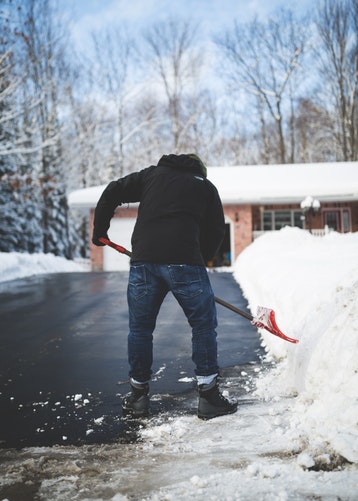Winter has officially arrived to Ontario, and though it is exciting to see the first snow fall of the season it is also an annoyance for those who have to shovel snow. The task of clearing snow from your driveway and sidewalk becomes a daily ritual as regular as brushing your teeth. Unlike brushing your teeth, however, snow shovelling can be a demanding physical activity, and with any demanding physical activity, comes the potential for injury. We have some tips and trick to help you avoid getting injured while shovelling snow.
1. Assess the situation first and decide the best place for you to put your snow. Try to move the snow the shortest distance possible. When feasible, push the snow along the ground first so it piles up closer to where you are going to put it, then lift it to where it goes rather than repetitively lifting and carrying the snow.
2. If you don’t have to lift it and can leave it in a pile on the side, leave it! When pushing or lifting snow it is necessary to use good posture. This means squarely facing the snow you are about to lift and keeping your feet wide. When bending, do so at your hips and knees, while keeping your back in a neutral position in order to use your leg muscles and save strain to your back. As you lift, tighten your stomach muscles (core muscles) as this provides a natural brace to your torso. Keep the load relatively light and as close into your body as possible.

3. Avoid twisting your back when dumping or tossing the snow, rather move your feet so they face the intended pile.
4. Grip the shovel with one hand on the handle and the other nearer to the blade. This will assist you in keeping the load close to your body when lifting and will give you more control with the weight on the shovel.
5. If possible, shovel in shifts as the snow falls rather than waiting until a heavy pile has built up.
6. If you feel any stress on your body, or worse, if you feel any cardiovascular warning signs such as lightheadedness, sudden shortness of breath, or chest pain/tightness, heed these warnings and stop immediately to get emergency assistance.
7. If you regularly need to shovel a lot of snow, you may want to trade the snow shovel in for a snow blower, but beware that snow blowing comes with its own set of injury risks. Also, if you are elderly, have a pre-existing medical condition, or are not in good enough physical shape to regularly shovel, there is always the option of hiring someone else to do the job to ensure that you remain free of injuries.
8. Stretch prior to shovelling snow to ensure that your muscles, joints and heart are warmed up for the powerful movements required to push, lift and toss the snow.

